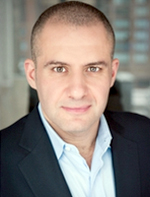 Ronn Torossian Ronn Torossian |
Elon Musk illustrated that recently in his Twitter rant following the death of a driver who was using the autopilot feature on his Tesla when he died. Media experts have since lost faith in Musk’s skills at handling both pressure, and the press.
So here are some tips on what not to do in the face of crisis, based on Musk’s behavior and that of Tesla on a whole.
Belittling the tragedy
Though Tesla’s blog post regarding the incident was titled “A Tragic Loss,” the company started the blog post by first pointing out that the victim’s death was the first in 130 million miles, which is far less frequent than 1 in 94 million miles for other vehicles in the United States.
In doing so, Tesla belittles the significance of Joshua Brown’s death and gets defensive while trying to save face for the brand. What this effectively does is to make Tesla seem unsympathetic and more concerned about its appearance in the media, than the fate of its customers. This is not a good look.
CEO Elon Musk re-tweeted a user who pointed out that 1.3 billion people die in car accidents every year, but the death of one driver in a Tesla, and somehow all driverless cars become unsafe. In another blog post, the company then referred to Brown’s fatality as a “statistical inevitability.”
Defending the Company
Tesla’s entire focus since Brown’s death has been on the company, the brand, and its image. Tesla shed very little light on the victim, his family, and how they plan to make amends.
To make matters worse, Musk told a Fortune magazine journalist that 500,000 lives would have been saved in 2015 if everyone had been using the autopilot technology — the same technology that failed to detect the truck which resulted in Joshua Brown’s death. Though statistically this could be true, the timing couldn’t prove worse. There’s a time to share that information, but not so quickly after such a tragedy that the body has barely been laid to rest.
Taking to social media
The CEO was also wrong to take to social media with these opinions and then to Fortune Magazine.
This almost immortalizes the bad behavior; social media platforms can amplify bad decisions and maybe even crafting it into pop culture for a time. The longer this issue remains in the media, the less likely the public is to believe Elon Musk, when he finally realizes the importance of showing some compassion, respect, and sympathy for his deceased customer.
Elon Musk’s behavior was not helpful, and while there maybe some truth to his statements, the inappropriateness comes from the wording and the timing, and a refusal to admit any wrongs or responsibility for the death of Joshua Brown. People begin to wonder if they experience fatalities using the autopilot system, will he treat their death as just another statistical expectation in the media as well?
Musk should plot his next moves — and words — carefully, while the world is watching.
* * *
5WPR CEO Ronn Torossian is a Range Rover driver who wouldn’t use cruise control, let alone Auto-Pilot.


 There’s a fine line between newsjacking and taking advantage, aka ambulance chasing. Our job as PR professionals is to tread it carefully.
There’s a fine line between newsjacking and taking advantage, aka ambulance chasing. Our job as PR professionals is to tread it carefully. PR firms need to be mindful of ways their work product may be protected by the attorney-client privilege whenever working with a client’s internal legal team or its external legal counsel.
PR firms need to be mindful of ways their work product may be protected by the attorney-client privilege whenever working with a client’s internal legal team or its external legal counsel. Manuel Rocha, former US ambassador and intenational business advisor to LLYC, plans to plead guilty to charges that he was a secret agent for Cuba.
Manuel Rocha, former US ambassador and intenational business advisor to LLYC, plans to plead guilty to charges that he was a secret agent for Cuba. CEO mentoring is an often-overlooked aspect of why CEOs are able to make good decisions, and sometimes make bad ones—all of which intersects with the role and duties of a board.
CEO mentoring is an often-overlooked aspect of why CEOs are able to make good decisions, and sometimes make bad ones—all of which intersects with the role and duties of a board.  How organizations can anticipate, prepare and respond to crises in an increasingly complex world where a convergent landscape of global challenges, threats and risks seem to arrive at an unrelenting pace.
How organizations can anticipate, prepare and respond to crises in an increasingly complex world where a convergent landscape of global challenges, threats and risks seem to arrive at an unrelenting pace.


 Have a comment? Send it to
Have a comment? Send it to 
No comments have been submitted for this story yet.